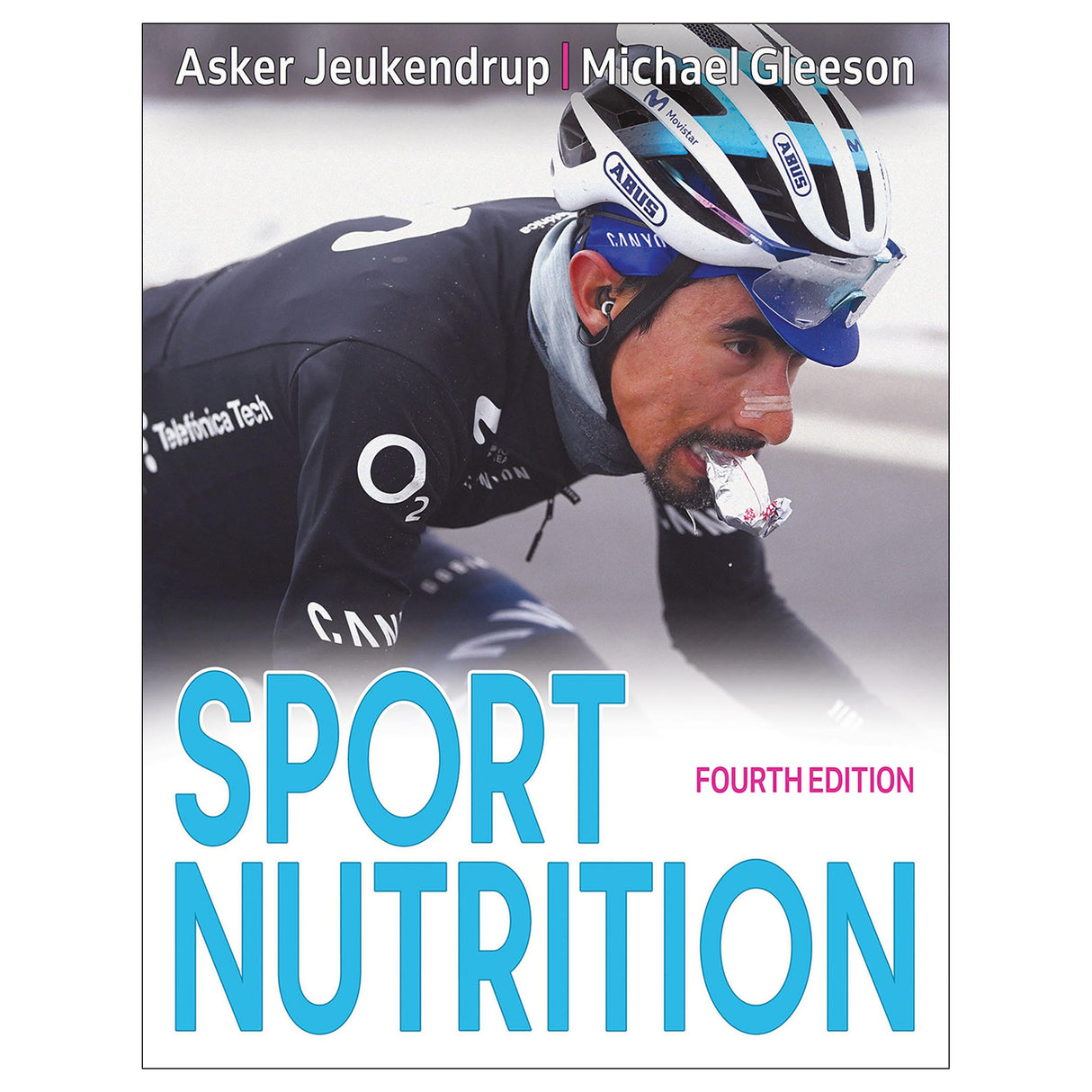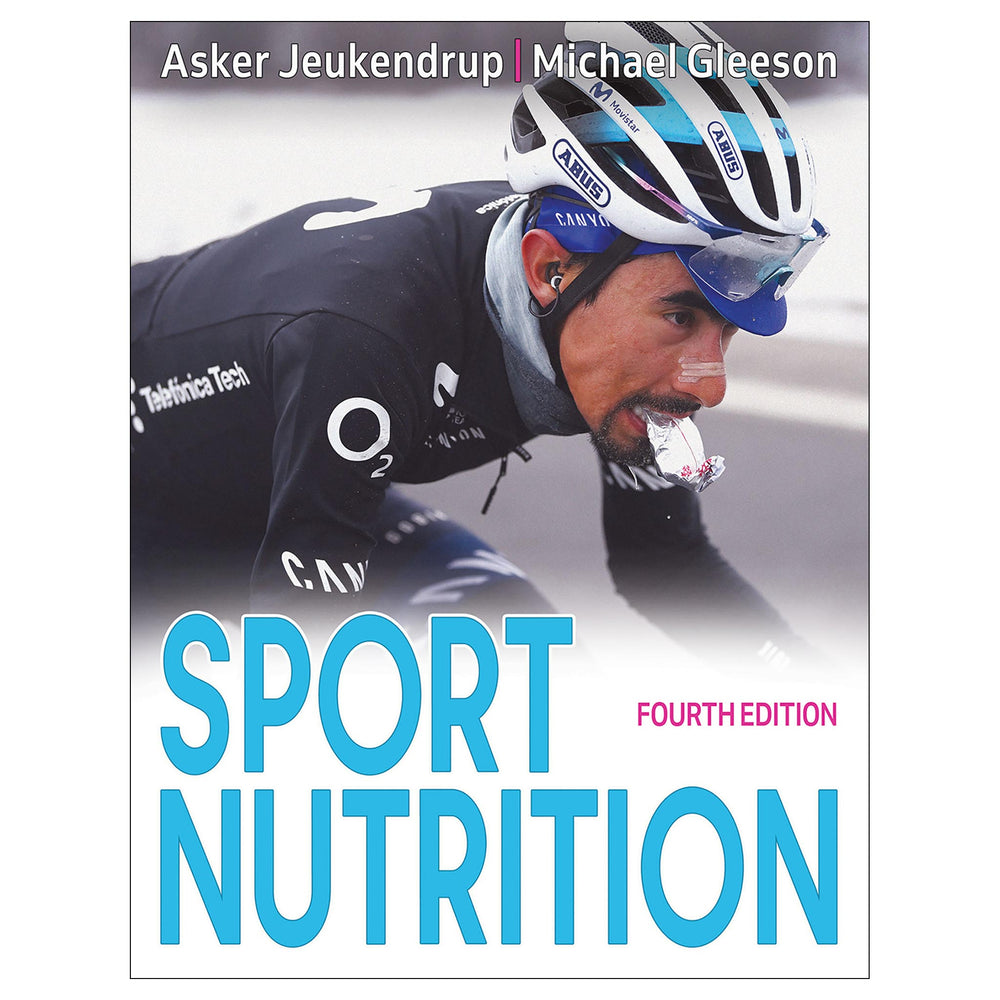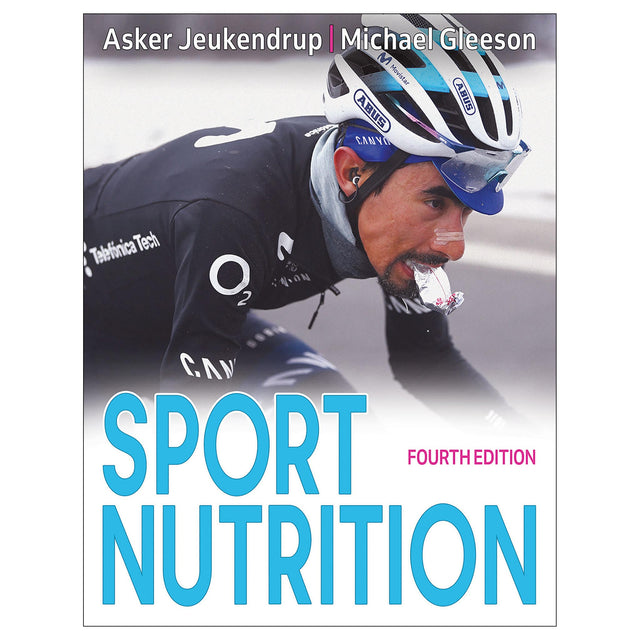Sport Nutrition 4th Edition With HKPropel Access
Author: Asker Jeukendrup, Michael Gleeson
$139.00 USD
Using a physiological basis, Sport Nutrition aims to explain the role of nutrition in enhancing exercise performance. It moves from general principles of nutrition and nutrient requirements to estimating and fulfilling energy needs with the appropriate combinations of macronutrients and micronutrients. Supplements are addressed from a scientific standpoint, followed by the influence of nutrition on training adaptations, body composition, weight management, and eating disorders. Information on personalized nutrition covers periodized nutrition, sex differences, and special populations (young athletes, older athletes, and diabetic athletes) and offers practical examples from specific sports.
The fourth edition is greatly enhanced with a new full-color format showcasing 40 new infographics and 50 additional figures and illustrations. These visual elements provide a more engaging experience, allowing students to fully comprehend important concepts, methods, and research findings. This edition features online access to references, appendixes, and glossary terms and definitions, providing useful explanations and at-a-glance information. New topics in this edition include the following:
- How to recognize good versus bad information about sport nutrition
- The role of gut microbiota and how this microbiome is affected by diet and exercise
- The function of macronutrients and micronutrients in relation to exercise performance and recovery
- Guidelines to limit gastrointestinal problems during exercise
- Electrolyte replacement during exercise in the heat
- The effects of exercise and nutrition on immune function and health outcomes, as learned from the COVID-19 pandemic
- Low energy availability and the causes and consequences of relative energy deficiency in sport (REDs)
Note: A code for accessing HKPropel is included with all print books.
Audience
Text for graduate-level courses in sport science, exercise physiology, and other sport- or exercise-related degree programs; reference for sport nutritionists, dietitians, and other physical activity professionals.Function of Nutrients
Carbohydrate
Fat
Protein
Water
Alcohol
Vitamins, Minerals, and Trace Elements
Phytonutrients
Recommended Intakes of Nutrients
Development of Recommended Intakes
Current Recommended Intakes
Analyzing Dietary Intakes
The Importance of Nutrition in Sport
Key Points
Review Questions
Recommended Readings
Chapter 2. Healthy Eating
Health Effects of Consuming Excess Nutrients
Practical Guidelines for a Balanced, Healthy Diet
Recommendations for a Healthy Diet and Lifestyle
Nutrition Facts Labels
The Sport Nutrition Pyramid
Nutrient Content and Health Claims on Food Packaging
Processed Foods and Additives
Fat Substitutes
Misinformation in Sport Nutrition and Recognizing Good and Bad Information
Key Points
Review Questions
Recommended Readings
Chapter 3. Fuel Sources for Muscle and Exercise Metabolism
Subcellular Skeletal Muscle Structure
Force Generation in Skeletal Muscle
Fiber Types
Energy for Muscle Force Generation
Fuel Stores in Skeletal Muscle
Regulation of Energy Metabolism
Metabolic Responses to Exercise
Metabolic Adaptations to Exercise Training
Key Points
Review Questions
Recommended Readings
Chapter 4. Energy
Energetic Efficiency
Measuring the Energy Content of Food
Measuring Energy Expenditure
Components of Energy Expenditure
Energy Balance
Key Points
Review Questions
Recommended Readings
Chapter 5. Gastric Emptying, Digestion, and Absorption
Anatomy of the Gastrointestinal Tract
Regulation of the Gastrointestinal Tract
Digestion
Absorption
Gut Microbiota
Maintaining Gut Health
Regulation of Gastric Emptying
Potential Role of Gut Microbiota in Athlete Health and Performance
Gastrointestinal Problems During and After Exercise
Key Points
Review Questions
Recommended Readings
Chapter 6. Carbohydrate
History
Role of Carbohydrate
Recommendations for Carbohydrate Intake
Carbohydrate Intake in the Days Before Competition
Carbohydrate Intake in the Hours Before Exercise
Carbohydrate Intake 30 to 60 Minutes Before Exercise
Carbohydrate Intake During Exercise
Carbohydrate Intake After Exercise
Key Points
Review Questions
Recommended Readings
Chapter 7. Fat
Fat Metabolism During Exercise
Limits to Fat Oxidation
Fat as a Fuel During Exercise
Regulation of Carbohydrate and Fat Metabolism
Fat Supplementation and Exercise
Effects of Diet on Fat Metabolism and Performance
Key Points
Review Questions
Recommended Readings
Chapter 8. Protein and Amino Acids
Amino Acids
Techniques to Study Protein and Amino Acid Metabolism
Protein Requirements for Exercise
Training and Protein Metabolism
Effect of Protein Intake on Muscle Protein Synthesis
Amino Acids as Ergogenic Aids
Protein Intake and Health Risks
Key Points
Review Questions
Recommended Readings
Chapter 9. Fluid and Electrolytes
Thermoregulation and Exercise in the Heat
Effects of Dehydration on Exercise Performance
Mechanisms of Heat Illness
Effects of Fluid Intake on Exercise Performance
Electrolyte Losses and Replacement During Exercise
Daily Water Balance
Fluid Requirements for Athletes
Key Points
Review Questions
Recommended Readings
Chapter 10. Vitamins and Minerals
Water-Soluble and Fat-Soluble Vitamins
Recommended Intakes of Vitamins
Recommended Intakes of Vitamins for Athletes
Macrominerals and Microminerals
Recommended Intakes of Minerals
Critical Micronutrient Functions
Assessing Micronutrient Status
Exercise and Micronutrient Requirements
Ergogenic Effect of Micronutrient Supplementation
Summary of Recommendations for Micronutrient Intake in Athletes
Key Points
Review Questions
Recommended Readings
Chapter 11. Nutrition Supplements
Relative Importance of Supplements to a Normal Diet
Nonregulation of Nutrition Supplements
Critical Evaluation of Nutrition Supplement Studies
Androstenedione
Ashwagandha
Bee Pollen
Beetroot Juice and Other Sources of Dietary Nitrate
β-Alanine and Carnosine
β-Hydroxy β-Methylbutyrate
Boron
Caffeine
Cannabidiol
Carnitine
Cherry Juice
Choline
Chromium
Coenzyme Q10
Cordyceps
Creatine
Dehydroepiandrosterone
Fish Oil and Omega-3 Fatty Acids
Ginseng
Glandulars
Glycerol
Green Tea
Inosine
Ketone Salts
Lactate Salts and Polylactate
Lecithin
Medium-Chain Triacylglycerol
Pangamic Acid
Phosphatidylserine
Phosphorus and Phosphate Salts
Polyphenols
Pyruvate and Dihydroxyacetone
Sodium Bicarbonate
Sodium Citrate
Sodium Nitrate
Vanadium
Wheat Germ Oil
Additive Effects of Combining Different Supplements
Contamination of Nutrition Supplements
Key Points
Review Questions
Recommended Readings
Chapter 12. Nutrition and Training Adaptations
Training Adaptations
Signal Transduction Pathways
Starting a Signaling Cascade
Secondary Signals
Nutrition and Effects on Training Adaptations
Overreaching and the Overtraining Syndrome
Nutrition and Effects on Sleep
Nutrition and Effects on Rehabilitation
Key Points
Review Questions
Recommended Readings
Chapter 13. Nutrition and Immune Function in Athletes
Functions of the Immune System and Its Cellular Components
General Mechanisms of the Immune Response
Causes of Illness in Athletes
Effects of Exercise and Other Lifestyle Factors on the Immune System
Nutritional Manipulations to Decrease Immunodepression in Athletes
Nutrition for the Athlete During a Period of Illness
Conclusions and Recommendations
Key Points
Review Questions
Recommended Readings
Chapter 14. Body Composition
Optimal Body Weight and Composition
Body Composition Models
Normal Ranges of Body Weight and Body Fat
Body Composition Measurement Techniques
Achieving Changes in Body Composition
Should We Measure Body Weight and Body Composition in Athletes?
Key Points
Review Questions
Recommended Readings
Chapter 15. Weight Management
Regulation of Body Weight
Set Point, Settling Point, and Other Theories of Body Weight Regulation
Genetics
Regulation of Appetite
Effect of Exercise on Appetite
Physical Activity and Energy Expenditure
Dietary Weight-Loss Methods
Energy and Macronutrient Intake
Exercise for Weight Loss
Decreased Resting Metabolic Rate With Weight Loss
Weight Cycling
Sex Differences in Weight Loss
Practicalities of Weight Loss for Athletes
Weight Gain
Key Points
Review Questions
Recommended Readings
Chapter 16. Eating Disorders and Low Energy Availability in Athletes
Types of Eating Disorders
Prevalence of Eating Disorders in Athletes
Effects of Eating Disorders on Sports Performance
Effects of Eating Disorders on Health and Low Energy Availability
Low Energy Availability and Relative Energy Deficiency in Sport
Treatment and Prevention of Eating Disorders and Disordered Eating
Key Points
Review Questions
Recommended Readings
Chapter 17. Personalized Nutrition
Genetic Influences
Turning Science Into Practice
Specific Populations
Nutrition Application in Different Sport Situations and Populations
Key Points
Review Questions
Recommended Readings
Maintaining Gut Health
Nutritional Manipulation to Decrease Immunodepression in Athletes
Protein Requirements for Exercise




All ancillaries are free to adopting instructors through HKPropel.
Instructor guide. Includes a sample syllabus, recommended class format, chapter objectives, a detailed lecture outline, key points, review questions and answers, and sample student assignments. Suggestions for practical lab assignments are also offered.
Test package. Contains 765 questions in true-false and multiple-choice formats. The files may be downloaded for integration with a learning management system or printed for use as paper-based tests. Instructors may also create their own customized quizzes or tests from the test bank.
Chapter quizzes. Contains ready-made quizzes (10 questions each) to assess student comprehension of the most important concepts in each chapter.
Presentation package. Features approximately 45 PowerPoint slides per chapter of infographics, content, figures, and tables from the book that can be used for class discussion and presentation. The slides in the presentation package can be used directly within PowerPoint or printed to make handouts for students. Instructors can easily add, modify, and rearrange the order of the slides.
Image bank. Includes most of the infographics, figures, content photos, and tables from the text, sorted by chapter. These can be used in developing a customized presentation based on specific course requirements.





